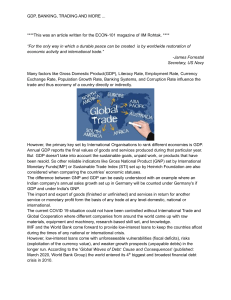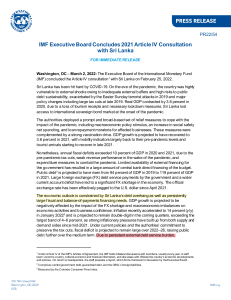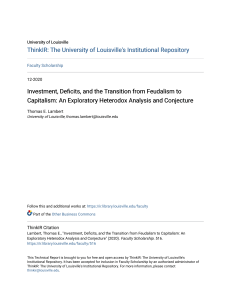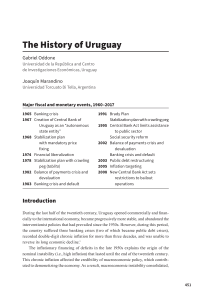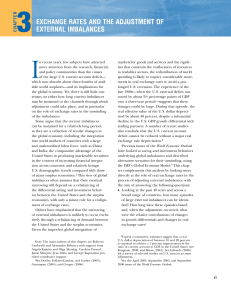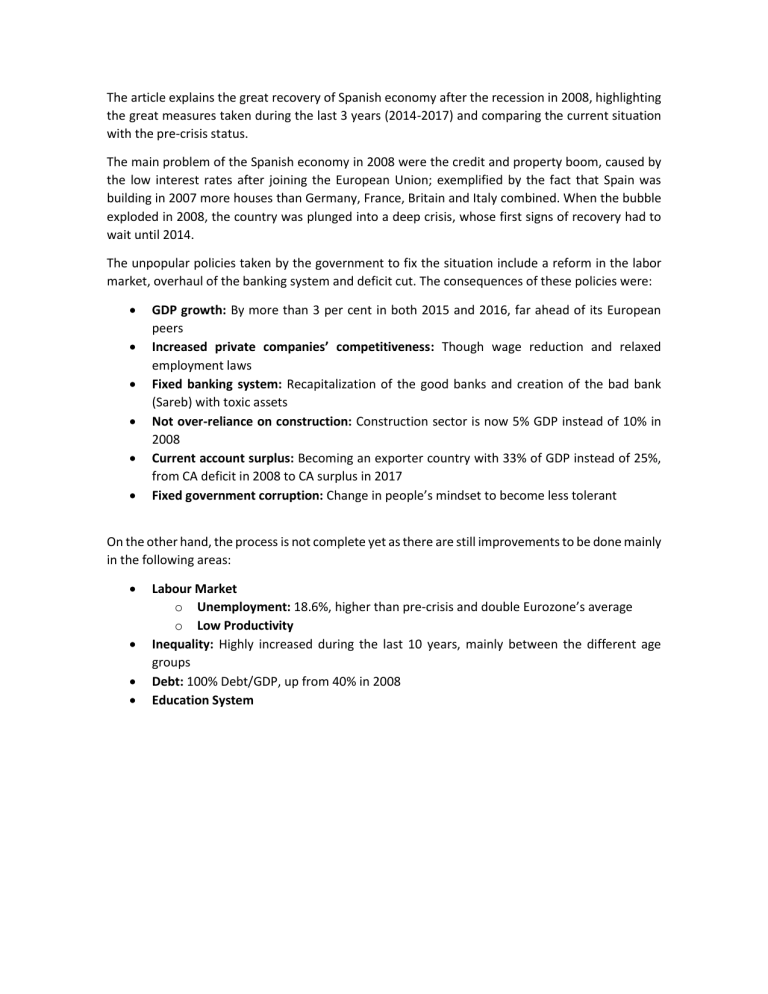
The article explains the great recovery of Spanish economy after the recession in 2008, highlighting the great measures taken during the last 3 years (2014-2017) and comparing the current situation with the pre-crisis status. The main problem of the Spanish economy in 2008 were the credit and property boom, caused by the low interest rates after joining the European Union; exemplified by the fact that Spain was building in 2007 more houses than Germany, France, Britain and Italy combined. When the bubble exploded in 2008, the country was plunged into a deep crisis, whose first signs of recovery had to wait until 2014. The unpopular policies taken by the government to fix the situation include a reform in the labor market, overhaul of the banking system and deficit cut. The consequences of these policies were: GDP growth: By more than 3 per cent in both 2015 and 2016, far ahead of its European peers Increased private companies’ competitiveness: Though wage reduction and relaxed employment laws Fixed banking system: Recapitalization of the good banks and creation of the bad bank (Sareb) with toxic assets Not over-reliance on construction: Construction sector is now 5% GDP instead of 10% in 2008 Current account surplus: Becoming an exporter country with 33% of GDP instead of 25%, from CA deficit in 2008 to CA surplus in 2017 Fixed government corruption: Change in people’s mindset to become less tolerant On the other hand, the process is not complete yet as there are still improvements to be done mainly in the following areas: Labour Market o Unemployment: 18.6%, higher than pre-crisis and double Eurozone’s average o Low Productivity Inequality: Highly increased during the last 10 years, mainly between the different age groups Debt: 100% Debt/GDP, up from 40% in 2008 Education System






